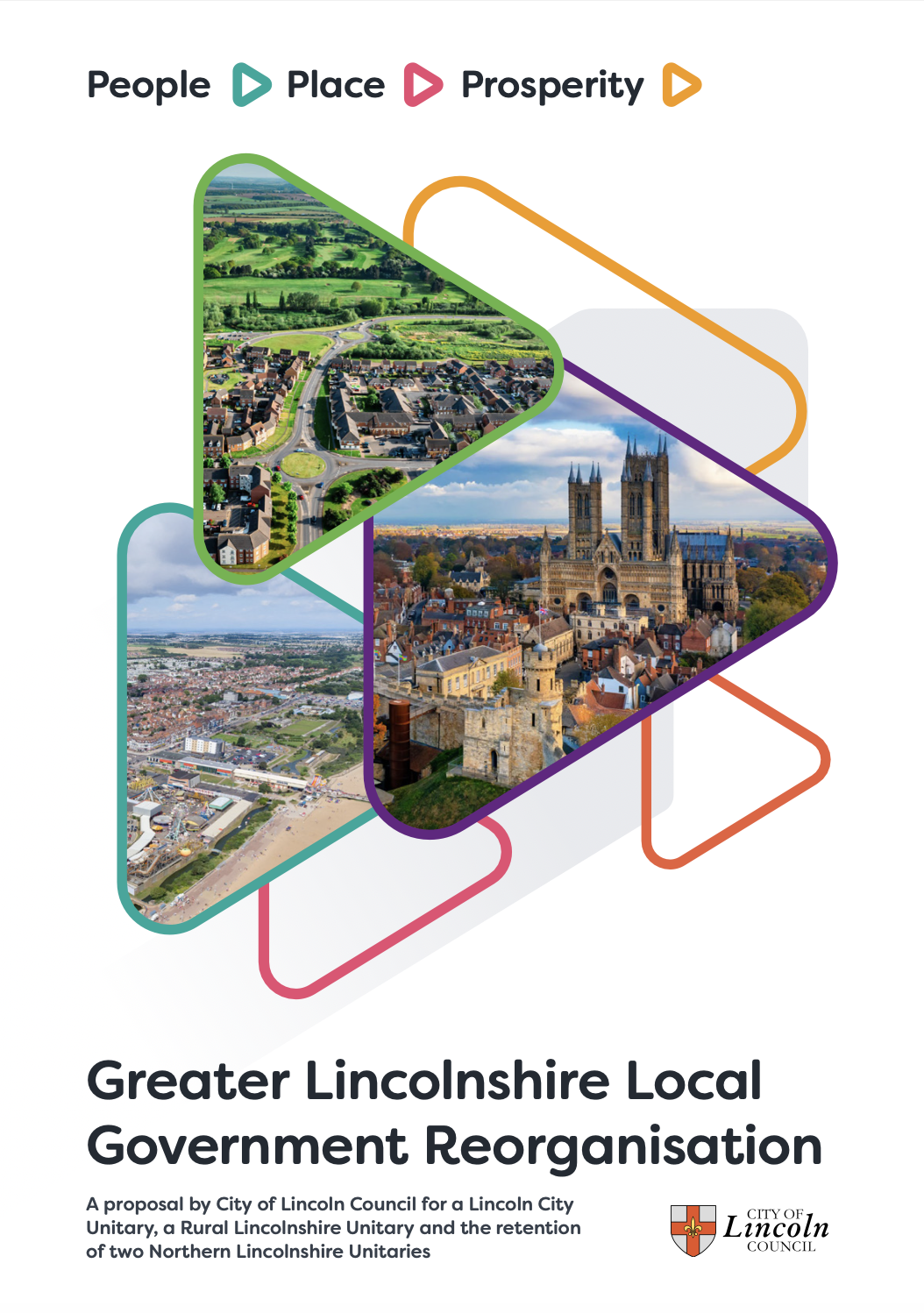
City of Lincoln Council has today published its proposal for a transformed model of local government across Greater Lincolnshire.
City of Lincoln Council has today published its proposal for a transformed model of local government across Greater Lincolnshire.
The proposal will now be considered at the authority’s Full Council and Executive meetings later this month, before its submission to Government on 28 November.
After more than fifty years without significant structural reform, the Government’s Local Government Reorganisation (LGR) agenda provides a once-in-a-generation opportunity to redesign services around the needs of communities.
The proposal recognises that the way people live, work, and travel across Lincolnshire has changed dramatically since local authority boundaries were drawn in the 1970s.
It puts forward a modern governance model that reflects both the shared strengths and the distinct urban and rural identities across the county.
Under the plans, two new unitary authorities would be created across the current two-tier area, which is soon to be dissolved, alongside the existing northern unitary authorities:
- A new unitary for Lincoln City, reflecting its functional geography and rich civic history, giving the city the scale and powers needed to drive economic growth, innovation, and prevention work across the wider urban area.
- A new unitary for Rural Lincolnshire, designed around the priorities and identities of rural, coastal, and market-town communities, ensuring services reflect local needs and local identity.
- North East Lincolnshire and North Lincolnshire would continue as existing unitary authorities, with the option to join together in future if beneficial for their shared industrial and urban priorities.
Together, these new councils would be close enough to communities to remain local, while large enough to be sustainable and deliver more efficient, responsive public services.
A key focus of the proposal is the alignment of growth and prevention to create long-term sustainability built on Lincolnshire’s current financial strengths.
The proposal is not about rescuing failing councils but enabling the new councils to remain sustainable in the long term. By integrating function and aligning growth with prevention, the two new authorities will be able to generate efficiencies, strengthen resilience, and invest in the drivers of future prosperity.
Prevention reduces demand on high-cost services by enabling earlier intervention, supported by a unified council structure that better connects housing, health, and social care.
Together, growth and prevention create a more resilient financial model.
The proposal focuses on three priorities:
- People – services designed around people’s needs, with decisions made closer to communities and residents given a stronger voice.
- Place – services shaped around the distinct identities of Lincoln’s urban centre and the county’s rural, coastal and market-town communities, protecting the environment and supporting local identity.
- Prosperity – reducing inequality, improving quality of life, and enabling opportunities for inclusive growth across every part of Greater Lincolnshire.
By recognising the differences between the individual areas, and tailoring strategies accordingly, the new model will ensure both urban and rural communities can thrive, economically, socially, and environmentally.
Cllr Naomi Tweddle, Leader of City of Lincoln Council, said:
“Our proposal is ambitious, forward-looking, and reflects how people live today.
“It provides a strong foundation for better services and looks at how growth and prevention can be aligned to create a more sustainable future for Greater Lincolnshire.
“This is our opportunity to reshape local government, creating councils that reflect how people actually live and work, while giving communities a stronger voice and delivering better outcomes for all.”
Angela Andrews, Chief Executive of City of Lincoln Council, said:
“This proposal is built on strong evidence and a detailed understanding of the challenges and opportunities facing Greater Lincolnshire.
“It provides a sustainable model for delivering high-quality public services, supporting growth, and strengthening local democracy.
“We are grateful to everyone who has played their part in helping shape a proposal that is modern, practical, and true to the identity of our city and county.”
City of Lincoln Council’s Local Government Reorganisation proposal can be viewed at Appendix B - Proposal.pdf.

